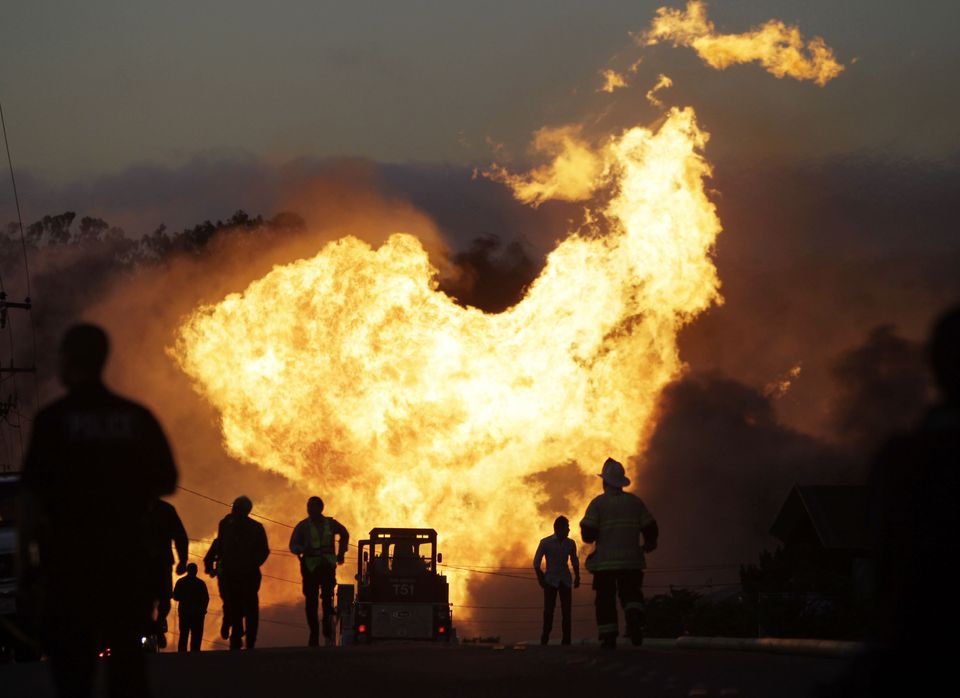
Nearly two years after a gas line under the sleepy suburban community of San Bruno exploded, leaving eight people dead and 38 homes destroyed, Pacific Gas & Electric Co. has pinpointed precisely what led to the disaster.
The culprit? A test the company ran on the pipeline in 1956 that damaged a previously defective weld, which eventually caused it to erupt.
(SCROLL DOWN FOR PHOTOS)
"We at PG&E are deeply sorry for the tragic accident in San Bruno on September 9, 2010," said the company in a statement released earlier this week. "It was our pipeline that ruptured and exploded because of a defective 4-foot piece of pipe that should never have been put in service. While we cannot undo that, we have accepted responsibility and acknowledged our liability to those injured."
The company made the assertion in defending itself against accusations by California Public Utilities Commission staffers that it failed to conduct such a test, commonly performed using high-pressure water to try to expose any weaknesses, and thus violated pipeline industry standards.
The company based its argument on the recollection of a former employee that a pressure test was conducted on the San Bruno pipeline around the time it was installed.
This revelation comes only days after the company began plugging the remains of the destroyed pipeline with concrete. The line has been out of service since the accident.
"It's important for us to go through the retirement process and take a look at what exactly is in the ground and then slurry fill that piece of pipe," PG&E spokesperson Brittany Chord explained to ABC7 News.
PG&E installed the section of pipe in question 55 years ago, but lacks the records showing where the material it used to make the line originated.
According to a memo the company released to regulators earlier this year, the company had known about problems with the pipeline for decades before the San Bruno blast.
After the detecting minor leak on the pipeline in 1988, the San Francisco-based energy giant noted that the problem was a with a weld on the line; however, it determined the defective weld wasn't serious enough to require a thorough examination of the entire section of pipe. But that very test may have discovered the issue that ultimately led to tragedy.
Documentation of the 1988 investigation was lost by PG&E and only recently recovered during a company-wide sweep of eleven million documents related to its natural gas infrastructure.
Both energy experts and state regulators have hammered PG&E for its disorganized record keeping. "This kind of information is stuff you just don't lose or get buried," pipeline safety consultant Richard Kuprewicz told CBS San Francisco. "I don't care how many thousands or millions of documents you have."
In March, PG&E agreed to pay $70 million in a settlement with the city of San Bruno. The money is going to create a non-profit organization dedicated to helping the victims of the blast.
This settlement, and the $100 million dollar relief fund set up by PG&E in the immediate aftermath of the explosion, come in addition to massive class-action lawsuit filed against the company by hundreds of the accident's victims.
The suit is currently scheduled to go to trial this October.
Check out these pictures showing the aftermath of the blast:

